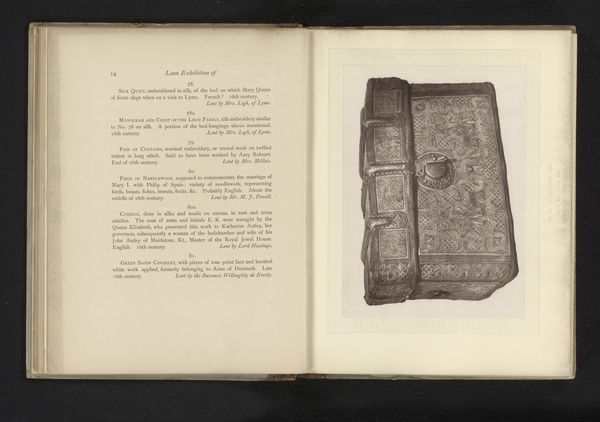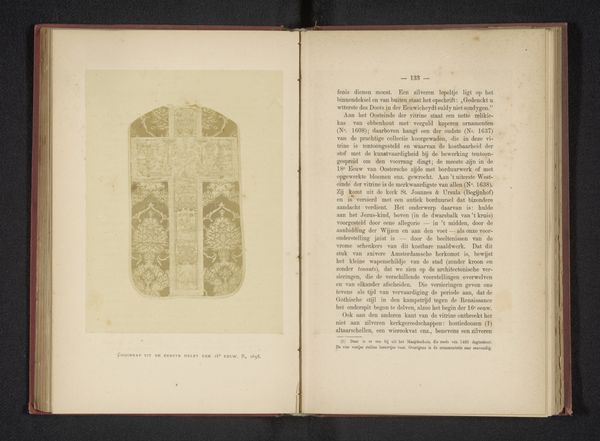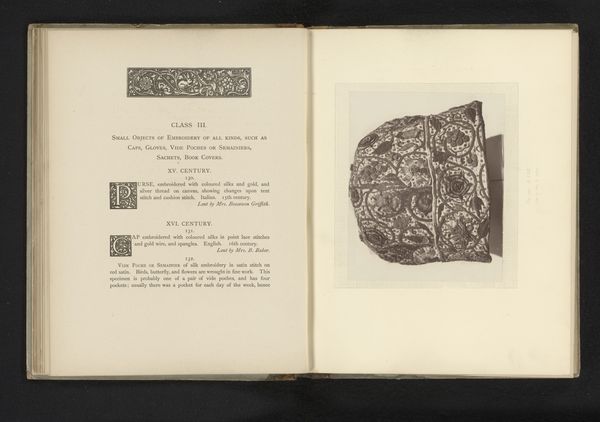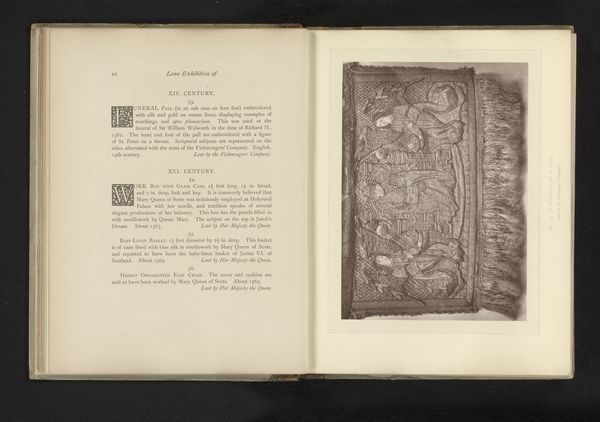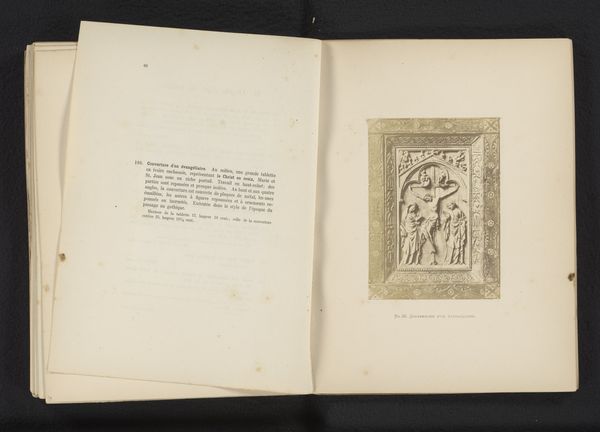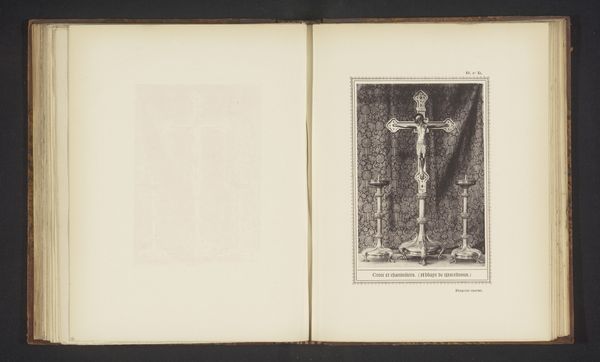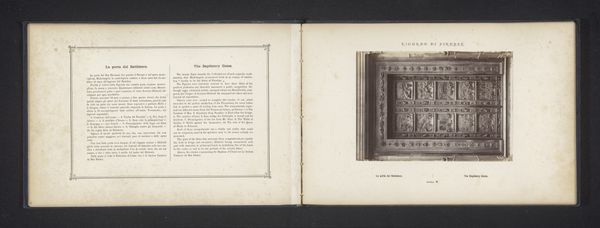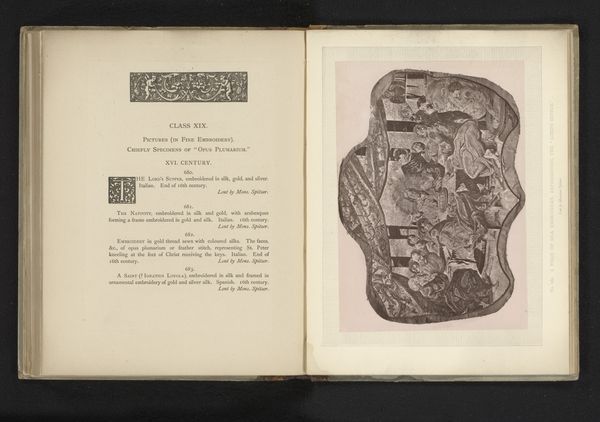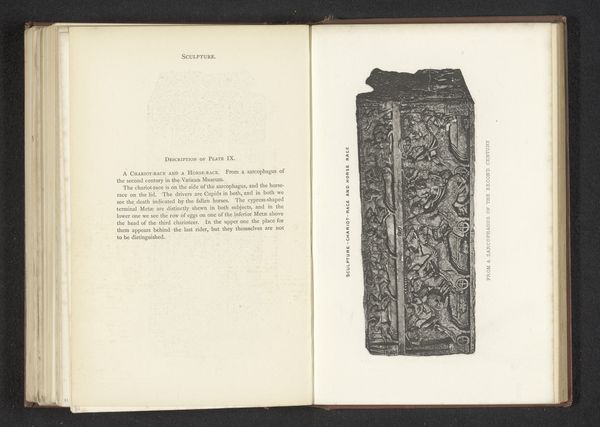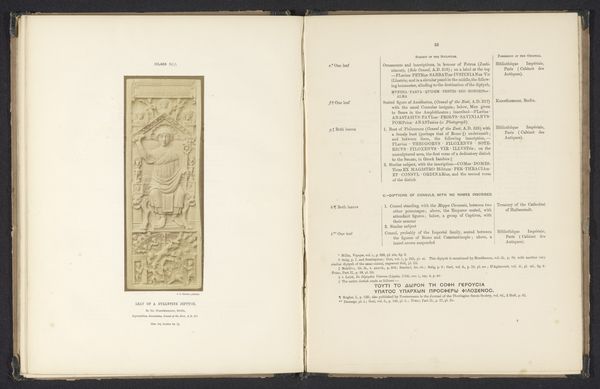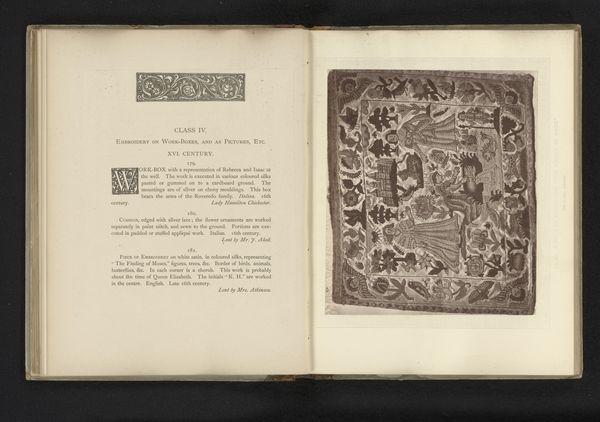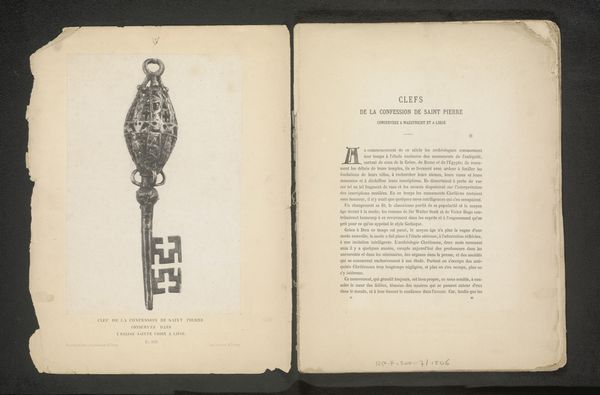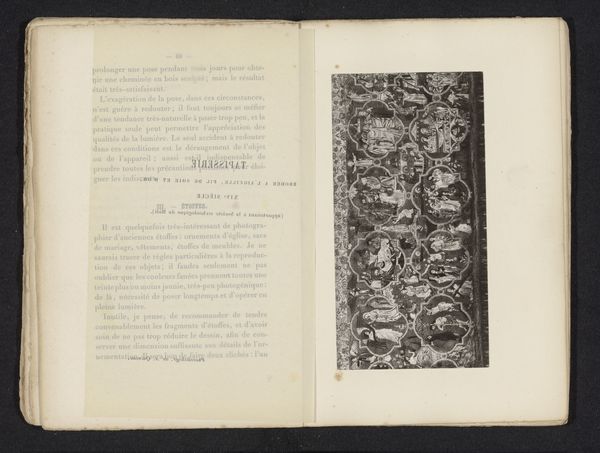
print, textile, photography
# print
#
textile
#
11_renaissance
#
photography
Dimensions: height 223 mm, width 160 mm
Copyright: Rijks Museum: Open Domain
Editor: Here we have an image of, seemingly, an open book, in which a Y-shaped textile is represented. It’s titled "Ofrey-borduurwerk in de vorm van een Y," attributed to Isabel Agnes Cowper, dating from before 1874. Considering the context of display, how do socio-political forces shape our understanding of religious objects like this? Curator: That’s a very insightful question. The image itself presents several layers for investigation through social, cultural and institutional history. The 'Ofrey-borduurwerk' - essentially, embroidery on a liturgical vestment- holds immense symbolic weight. These textiles were often commissioned by wealthy patrons or religious institutions, reflecting not only their devotion but also their social status and political influence. How do you think this specific example speaks to power dynamics within the Church at that time? Editor: I suppose that the opulence implied by such intricate embroidery suggests a significant investment of resources, reflecting the Church’s wealth and its authority to commission such works. Is the photographic reproduction significant, as well? Curator: Exactly. The photograph's presence within a book speaks volumes about the democratization of art access. Prior to widespread photographic reproduction, such detailed visual information would only be available to those with physical access to the textile or perhaps hand-drawn reproductions. Think about who might have consumed such publications and why. Was this about scholarly study, artistic inspiration, or perhaps even the legitimization of certain ecclesiastical narratives? How do you think the act of documenting these artifacts shaped their reception and interpretation? Editor: It is fascinating how one can reflect on cultural meaning. So by disseminating images like these through printed material, one creates narratives that will likely survive longer in comparison to hand-drawn depictions, or even in comparison to not having records at all! Thank you. Curator: Absolutely! Examining the "life" of an image is invaluable in understanding its historical impact and enduring significance. This textile shows it really comes down to the art, it will come through different stages depending on politics and social views, however, it always stays around in new ways!
Comments
No comments
Be the first to comment and join the conversation on the ultimate creative platform.
